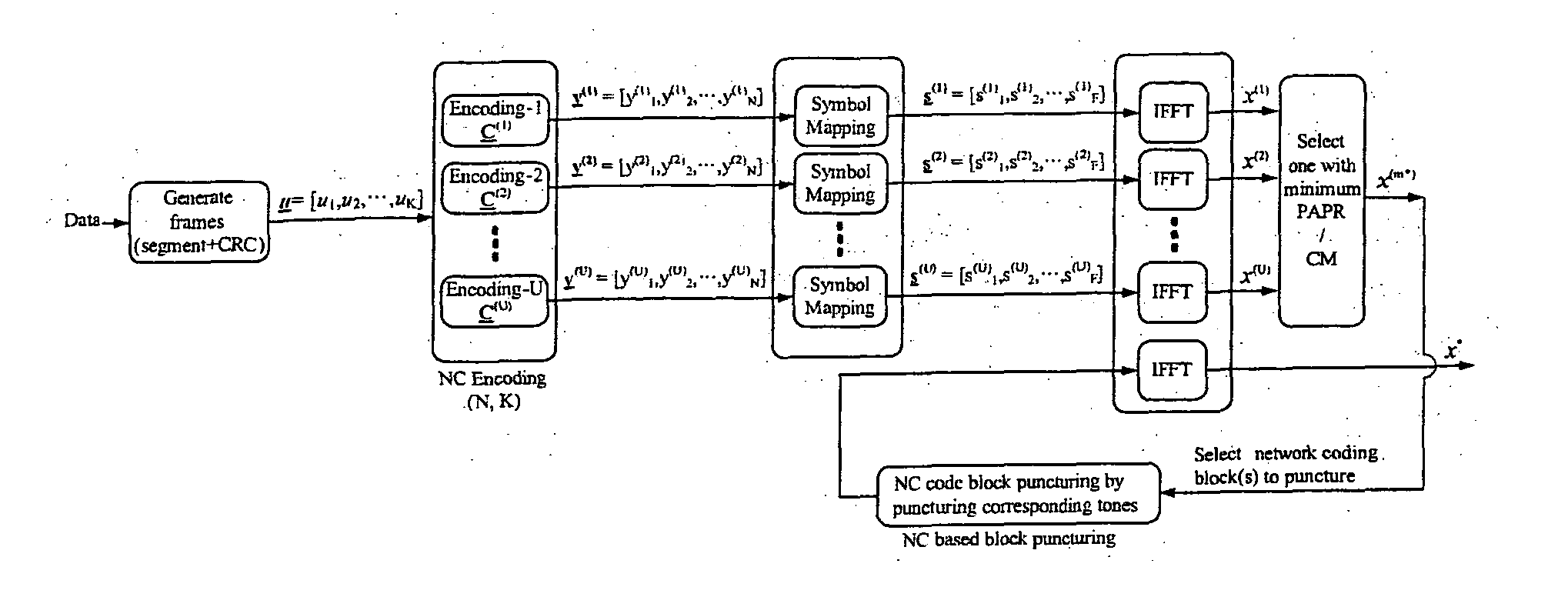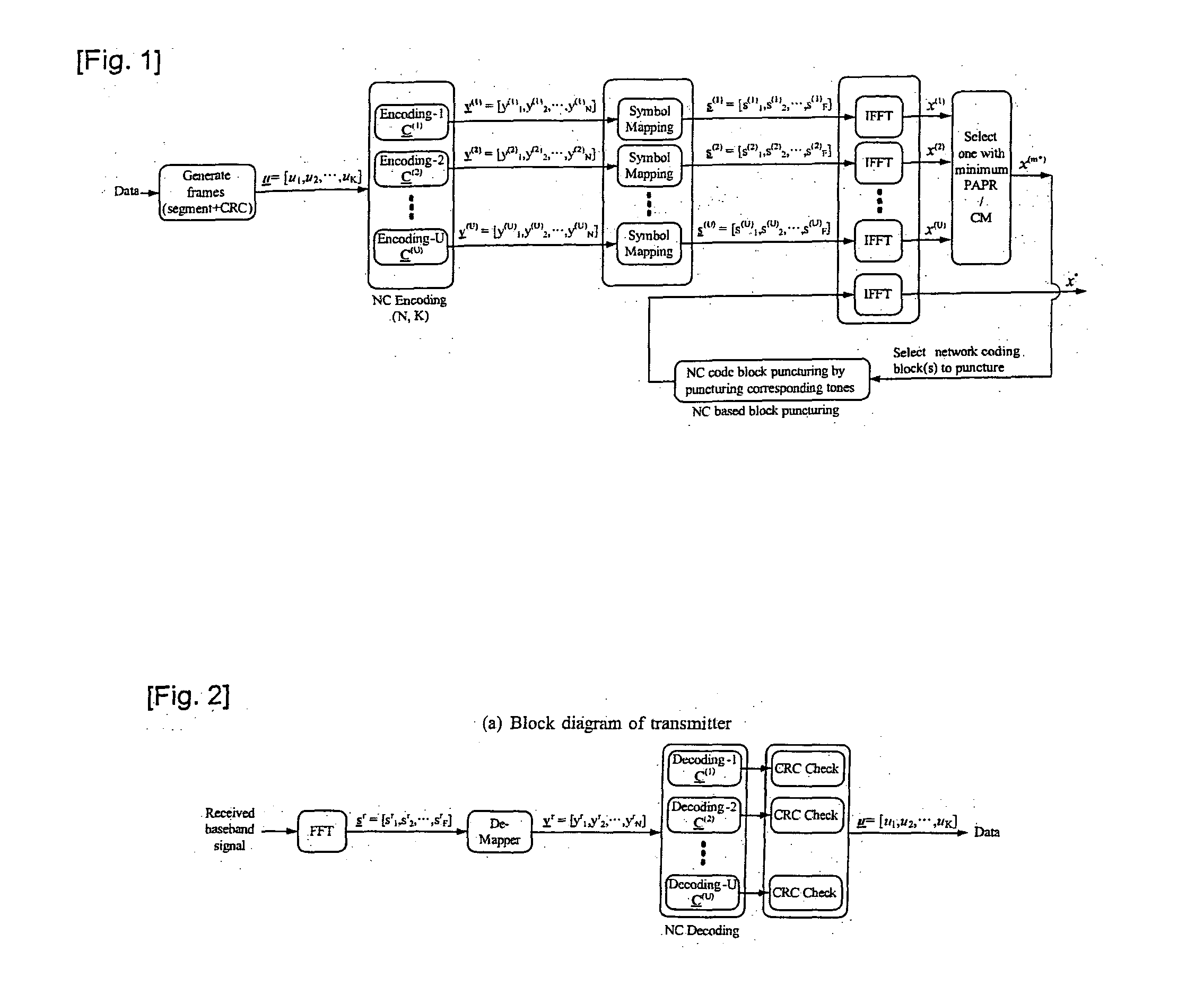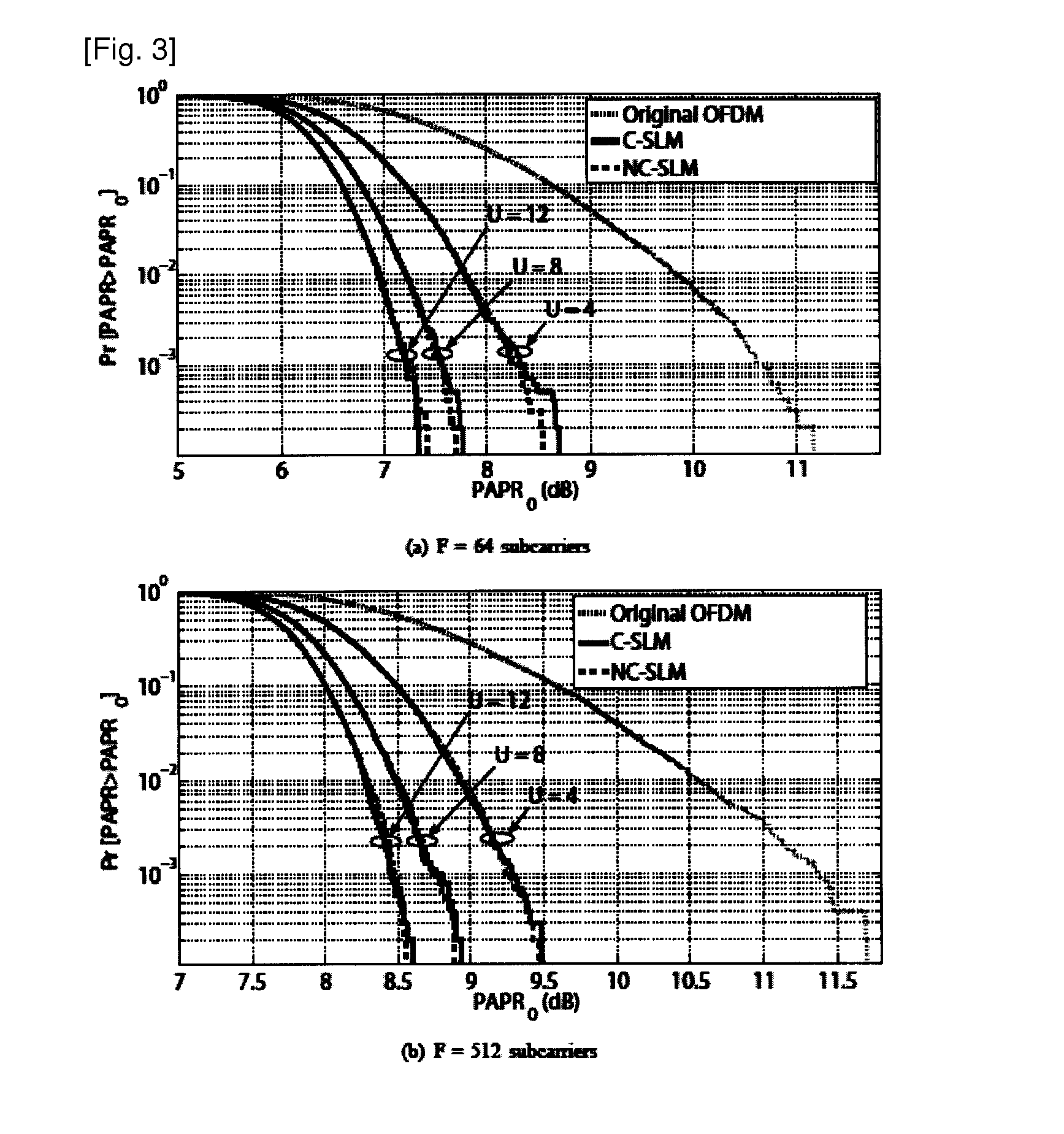Method of reducing peak-to-average power ratio, cubic metric and block error rate in OFDM systems using network coding
a technology of cubic metric and error rate, applied in the field of network coding, can solve the problems of high peak-to-average power ratio, low power efficiency, and critical issue of reducing papr or cm, and achieve the effect of reducing both papr and bler
- Summary
- Abstract
- Description
- Claims
- Application Information
AI Technical Summary
Benefits of technology
Problems solved by technology
Method used
Image
Examples
Embodiment Construction
[0016]One aspect of this disclosure relates to the recognition by the present inventors about the problems of the related art as described above, and further explained hereafter. Based upon this recognition, the features of this disclosure have been developed.
[0017]Although this disclosure is shown to be implemented in a specific mobile communication system, this disclosure may also be applied to other communication systems operating in conformity with different standards and specifications.
[0018]Hereinafter, description of structures and operations of the preferred embodiments according to the present invention will be given with reference to the accompanying drawings.
[0019]As described above, different PAPR reduction approaches had been studied, such as distortion techniques (e.g., a clipping, a companding) and distortionless techniques (e.g., a systematic coding, selective coding, partial transmit sequence, tone injection / reservation, active constellation extension). Among others...
PUM
 Login to View More
Login to View More Abstract
Description
Claims
Application Information
 Login to View More
Login to View More - R&D
- Intellectual Property
- Life Sciences
- Materials
- Tech Scout
- Unparalleled Data Quality
- Higher Quality Content
- 60% Fewer Hallucinations
Browse by: Latest US Patents, China's latest patents, Technical Efficacy Thesaurus, Application Domain, Technology Topic, Popular Technical Reports.
© 2025 PatSnap. All rights reserved.Legal|Privacy policy|Modern Slavery Act Transparency Statement|Sitemap|About US| Contact US: help@patsnap.com



